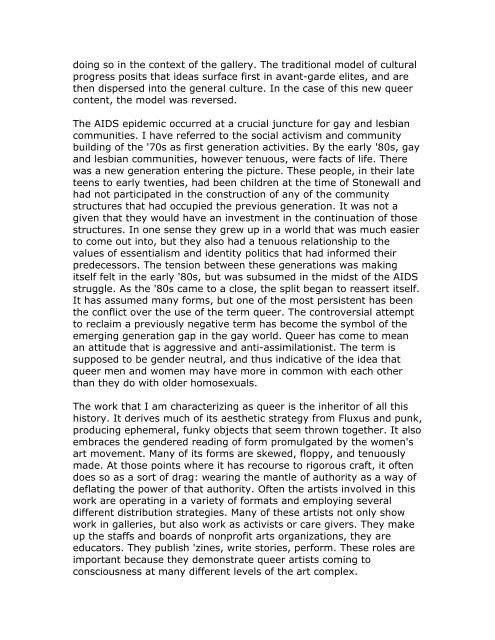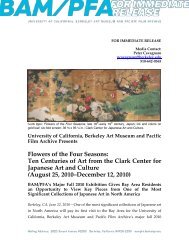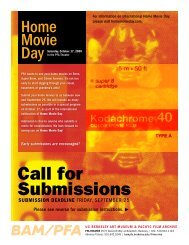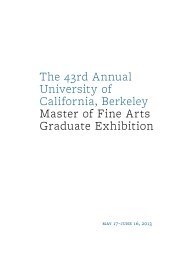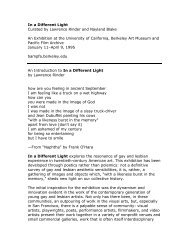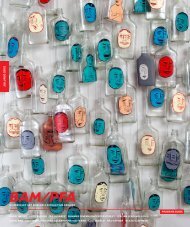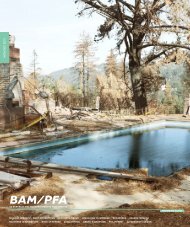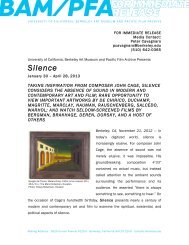Curating In a Different Light by Nayland Blake (PDF) - Berkeley Art ...
Curating In a Different Light by Nayland Blake (PDF) - Berkeley Art ...
Curating In a Different Light by Nayland Blake (PDF) - Berkeley Art ...
Create successful ePaper yourself
Turn your PDF publications into a flip-book with our unique Google optimized e-Paper software.
doing so in the context of the gallery. The traditional model of culturalprogress posits that ideas surface first in avant-garde elites, and arethen dispersed into the general culture. <strong>In</strong> the case of this new queercontent, the model was reversed.The AIDS epidemic occurred at a crucial juncture for gay and lesbiancommunities. I have referred to the social activism and communitybuilding of the '70s as first generation activities. By the early '80s, gayand lesbian communities, however tenuous, were facts of life. Therewas a new generation entering the picture. These people, in their lateteens to early twenties, had been children at the time of Stonewall andhad not participated in the construction of any of the communitystructures that had occupied the previous generation. It was not agiven that they would have an investment in the continuation of thosestructures. <strong>In</strong> one sense they grew up in a world that was much easierto come out into, but they also had a tenuous relationship to thevalues of essentialism and identity politics that had informed theirpredecessors. The tension between these generations was makingitself felt in the early '80s, but was subsumed in the midst of the AIDSstruggle. As the '80s came to a close, the split began to reassert itself.It has assumed many forms, but one of the most persistent has beenthe conflict over the use of the term queer. The controversial attemptto reclaim a previously negative term has become the symbol of theemerging generation gap in the gay world. Queer has come to meanan attitude that is aggressive and anti-assimilationist. The term issupposed to be gender neutral, and thus indicative of the idea thatqueer men and women may have more in common with each otherthan they do with older homosexuals.The work that I am characterizing as queer is the inheritor of all thishistory. It derives much of its aesthetic strategy from Fluxus and punk,producing ephemeral, funky objects that seem thrown together. It alsoembraces the gendered reading of form promulgated <strong>by</strong> the women'sart movement. Many of its forms are skewed, floppy, and tenuouslymade. At those points where it has recourse to rigorous craft, it oftendoes so as a sort of drag: wearing the mantle of authority as a way ofdeflating the power of that authority. Often the artists involved in thiswork are operating in a variety of formats and employing severaldifferent distribution strategies. Many of these artists not only showwork in galleries, but also work as activists or care givers. They makeup the staffs and boards of nonprofit arts organizations, they areeducators. They publish 'zines, write stories, perform. These roles areimportant because they demonstrate queer artists coming toconsciousness at many different levels of the art complex.


